Subtotal: £20.32
6 x Cochus Blue Tetra (Boehlkea fredcochui) 6 fish, Peaceful South American Tetra That Enhances Your Aquarium’s Beauty, A Must-Have for Any Tropical Fish Enthusiast Seeking Community Success
£21.49 Original price was: £21.49.£18.00Current price is: £18.00.
Welcome these beautiful 6 x Cochus Blue Tetra (Boehlkea fredcochui) into your community aquarium! Their stunning colors and graceful movements create a vibrant aquatic environment. Ideal for tropical fish enthusiasts seeking peaceful companions for a thriving community setup.
Species Introduction
Essential Care Guide for Your 6 x Cochus Blue Tetra (Boehlkea fredcochui)
| Optimal Living Conditions | |
|---|---|
| Water Temperature | 24-27°C (75-81°F) |
| pH Level | 6.5-7.5 |
| Water Hardness | 4-12 dKH |
| Minimum Tank Size | 80L (20 gal) |
| Salinity | Freshwater |
| Care Level | Beginner Friendly |
Care Requirements Dashboard
✓ Care Level: Easy
| Parameter | Recommended Value |
|---|---|
| Tank Size | Minimum 20 gallons |
| pH Level | 6.0 – 7.5 |
| Temperature | 22°C – 28°C (72°F – 82°F) |
| Hardness | 4 – 12 dGH |
Natural Behavior & Temperament
Cochus Blue Tetras are known for their peaceful demeanor and social nature. They are schooling fish that thrive in groups, ideally in schools of six or more. This schooling behavior not only enhances their confidence but also allows them to exhibit their natural swimming patterns, creating a mesmerizing display in your aquarium. These fish are active swimmers, often darting through the water column and exploring their surroundings. Their friendly disposition makes them compatible with a variety of community tank mates, allowing for a harmonious aquarium environment. Observing their interactions with one another and other species can provide endless entertainment for aquarists.
Tank Setup Guide
Creating an ideal environment for Cochus Blue Tetras involves replicating their natural habitat. A well-planted aquarium with plenty of hiding spots is essential for their comfort. Use a substrate that mimics the riverbed, such as fine gravel or sand, and incorporate live plants like Java Fern, Anubias, and floating plants to provide shade and cover. Driftwood and rocks can also be added to create a more natural layout. Ensure that the aquarium is well-cycled and stable before introducing these beautiful fish. Additionally, maintain a gentle water flow to mimic their natural habitat, as they prefer calm waters.
Water Quality Management
Water Parameter Notice
Maintaining optimal water quality is crucial for the health of Cochus Blue Tetras. Regular water changes of 25% every two weeks are recommended to keep nitrate levels low. Monitor the pH, temperature, and hardness regularly using reliable test kits. Sudden changes in water parameters can stress these fish, so gradual adjustments are essential. Use a quality filtration system to ensure clean and clear water, and consider using a heater to maintain a stable temperature within the recommended range.
Feeding & Nutrition
Cochus Blue Tetras are omnivorous and thrive on a varied diet. High-quality flake food, small pellets, and live or frozen foods such as brine shrimp, daphnia, and bloodworms should be included in their diet. Feed them small amounts 2-3 times a day, ensuring they consume all food within a few minutes to maintain water quality. A balanced diet will enhance their coloration and overall health. It’s important to avoid overfeeding, as excess food can lead to water quality issues.
Compatibility Guide
| Tank Mate | Compatibility |
|---|---|
| Neon Tetra | Excellent |
| Guppy | Good |
| Corydoras | Excellent |
| Betta | Not Recommended |
Cochus Blue Tetras are generally peaceful and can coexist with various community fish. However, avoid housing them with aggressive species like Bettas or larger cichlids that may see them as prey. Ideal tank mates include other small, peaceful fish such as Neon Tetras, Guppies, and Corydoras. When introducing new fish, observe their interactions to ensure a harmonious environment.
Health & Wellness
To maintain the health of your Cochus Blue Tetras, regular monitoring is essential. Look for signs of stress or illness, such as changes in behavior, loss of appetite, or visible abnormalities. Common issues include ich, fin rot, and stress-related diseases. Quarantine new arrivals before introducing them to the main tank to prevent the spread of diseases. Maintaining stable water parameters and providing a balanced diet are key factors in preventing health issues. If illness occurs, consult a veterinarian or an experienced aquarist for treatment options.
Breeding Information
Breeding Cochus Blue Tetras can be a rewarding experience for aquarists. To encourage breeding, provide a separate breeding tank with soft, slightly acidic water. Introduce a group of mature fish, allowing them to pair off naturally. Spawning typically occurs in the early morning, with females laying eggs on plants or spawning mops. After spawning, it’s essential to remove the adults, as they may eat the eggs. The eggs will hatch within 24-36 hours, and the fry should be fed infusoria or finely crushed flakes until they are large enough to consume small foods. Proper care during this stage is crucial for their survival and growth.
Acclimation Process
When introducing Cochus Blue Tetras to your aquarium, it is vital to acclimate them properly to minimize stress. Begin by floating the sealed bag in the aquarium for about 15 minutes to equalize the temperature. After that, gradually mix small amounts of tank water into the bag over the course of an hour. This process helps the fish adjust to the water chemistry of their new environment. Once acclimated, gently release the fish into the tank using a net to avoid adding any store water that may contain harmful substances.
Long-term Care
Cochus Blue Tetras typically live for 3-5 years when provided with optimal care. Regular monitoring of water quality, consistent feeding, and maintaining a stable environment will contribute to their longevity. As they grow, ensure that their school remains intact, as solitary fish can become stressed. Regularly check for signs of health issues, and be proactive in addressing any concerns. With proper care, these vibrant fish will thrive and bring joy to your aquarium for years to come.
Natural Habitat Recreation
To recreate the natural habitat of Cochus Blue Tetras, focus on creating a biotope that reflects their native environment. Incorporate a variety of live plants, driftwood, and rocks to mimic the underwater landscape of the Amazon. Use a dark substrate to enhance their coloration and create a more natural look. Ensure that the lighting is moderate, as these fish prefer slightly shaded areas. By providing a well-structured environment, you will not only enhance the aesthetic appeal of your aquarium but also promote the well-being of your aquatic companions.
Seasonal Care Adjustments
As seasons change, so do the conditions in your aquarium. During warmer months, ensure that the water temperature remains stable and does not exceed the upper limit of their preferred range. In colder months, consider using a heater to maintain a consistent temperature. Additionally, adjust the lighting schedule to mimic natural daylight cycles, promoting healthy growth for your plants and maintaining the well-being of your fish. Regular maintenance and observation during seasonal transitions are essential to ensure a thriving aquatic environment.
Expert Tips
For those looking to enhance their experience with Cochus Blue Tetras, consider implementing the following expert tips: 1) Maintain a well-planted tank to provide hiding spots and reduce stress. 2) Use a sponge filter to create gentle water flow, ideal for these delicate fish. 3) Regularly rotate and rearrange decorations to stimulate their curiosity and activity levels. 4) Monitor their behavior closely, as changes may indicate stress or health issues. By following these tips, you can create an enriching environment that promotes the health and happiness of your aquatic friends.
Troubleshooting
Should you encounter issues with your Cochus Blue Tetras, it’s important to address them promptly. Common problems include stress from aggressive tank mates, poor water quality, and inadequate diet. If you notice signs of stress, such as hiding or loss of color, assess the tank environment and make necessary adjustments. For health issues, consult with an experienced aquarist or veterinarian for guidance on treatment options. Regular maintenance and proactive monitoring will help prevent many common issues, ensuring a healthy and vibrant aquarium.
Scientific Background
The Cochus Blue Tetra is classified under the scientific name Boehlkea fredcochui, which belongs to the Characidae family. This family is known for its diverse range of freshwater fish, many of which are popular in the aquarium trade. The Cochus Blue Tetra is particularly valued for its striking coloration and peaceful nature, making it a favorite among aquarists. Research on this species highlights its adaptability to various water conditions, although it thrives best in slightly acidic, soft water. Conservation efforts are essential to protect their natural habitats, as deforestation and pollution pose significant threats to their populations in the wild.
Advanced Care Techniques
For experienced aquarists looking to take their care of Cochus Blue Tetras to the next level, consider advanced techniques such as creating a species-specific breeding setup. This involves fine-tuning the water parameters to mimic their natural spawning conditions, including temperature and pH adjustments. Additionally, implementing a varied diet that includes high-quality live foods can enhance their coloration and vitality. Regularly engaging with your fish through observation and interaction will help you understand their behaviors and needs better, leading to a more rewarding aquarium experience.
Water Quality Parameters
Optimal Range
24-27°C
6.5-7.5
0 ppm
Caution Zone
22-24°C or 27-29°C
6.0-6.5 or 7.5-8.0
0.25-0.5 ppm
Danger Zone
<22°C or >29°C
<6.0 or >8.0
>0.5 ppm
Monitoring Tip: Test water parameters weekly and perform regular water changes to maintain optimal conditions for your aquatic friends!
Frequently Asked Questions
Q: What tank size is required for Cochus Blue Tetra?
Cochus Blue Tetra thrive best in a tank of at least 60 litres. This size provides ample swimming space and allows for the establishment of a stable environment. A larger tank can enhance water quality and reduce stress among your fish friends. These tetras are peaceful and prefer to be in schools, so aim to keep at least six individuals together. This social structure helps to replicate their natural behaviour, promoting their overall health and happiness.
✓ Expert Tip
Consider adding live plants and decorations to create hiding spots, which will further reduce stress and mimic their natural habitat.
Q: What water parameters do Cochus Blue Tetra require?
Cochus Blue Tetra prefer soft, slightly acidic water. Aim for a pH between 6.0 and 7.5, with a temperature range of 22-28°C. Maintaining stable water conditions is crucial for their health; fluctuations can lead to stress or illness. Regular water changes of about 20% weekly can help maintain water quality. Additionally, ensure the water is well-oxygenated, as these fish thrive in clean environments. Testing your water parameters regularly will help you keep an eye on their living conditions.
✓ Expert Tip
Using a high-quality water conditioner can help to create a safe environment for your fish friends.
Q: How often should I feed Cochus Blue Tetra?
Cochus Blue Tetra can be fed twice daily. Offer a variety of high-quality flake food, micro-pellets, and occasional live or frozen foods such as brine shrimp or daphnia to ensure a balanced diet. Feed only what they can consume within a few minutes to avoid overfeeding, which can lead to poor water quality. Observing their feeding habits will help you adjust portion sizes appropriately. A varied diet not only maintains their health but also enhances their vibrant colours.
✓ Expert Tip
Consider using a feeding ring to prevent food from floating to the surface, ensuring all fish can access it.
Q: What are the best tank mates for Cochus Blue Tetra?
Cochus Blue Tetra are peaceful fish and do well in community tanks. Ideal tank mates include other small, non-aggressive tetras, rasboras, and peaceful bottom dwellers like Corydoras. Avoid larger or aggressive fish, as they may stress your tetras. The key is to create a harmonious environment where all species can coexist peacefully. Regularly observe their interactions to ensure compatibility and adjust tank mates if necessary.
✓ Expert Tip
Introduce new fish gradually to minimise stress and aggression within the tank.
Q: How do I properly acclimatise Cochus Blue Tetra to my aquarium?
Acclimatising new fish is crucial for their health. Begin by floating the sealed bag containing the tetras in the tank for about 15-20 minutes. This allows the temperature to equalise. Next, slowly introduce tank water into the bag over another 30 minutes, using a cup to add small amounts every few minutes. Finally, gently release the tetras into the aquarium, avoiding adding any bag water. This process helps reduce shock and stress, promoting a smoother transition.
✓ Expert Tip
Consider using a quarantine tank for new arrivals to monitor their health before introducing them to your main tank.
Q: What are the signs of a healthy Cochus Blue Tetra?
Healthy Cochus Blue Tetra exhibit vibrant colours, are active swimmers, and display social behaviour with their tank mates. Their fins should be fully extended, and they should show no signs of distress or disease, such as lethargy or unusual swimming patterns. Regular monitoring of your fish will help you identify any changes in behaviour or appearance, allowing for prompt action if needed. A well-maintained aquarium environment significantly contributes to their overall health.
✓ Expert Tip
Keep a journal of observations to track changes in behaviour or health over time.
Q: How do I successfully breed Cochus Blue Tetra?
Breeding Cochus Blue Tetra can be a rewarding endeavour. Firstly, ensure you have a group of at least six fish, as they are schooling fish. Set up a separate breeding tank with soft, slightly acidic water and provide spawning mops or fine-leaved plants for egg-laying. Once conditions are suitable, a male will court a female, and spawning will occur. Remove the adults after spawning to prevent them from eating the eggs. Eggs typically hatch within 24-36 hours, and fry should be fed infusoria or finely crushed flake food.
✓ Expert Tip
Maintain stable water conditions and monitor fry closely to ensure their proper growth and development.
Q: What temperature should I maintain for Cochus Blue Tetra?
The optimal temperature range for Cochus Blue Tetra is between 22°C and 28°C. Maintaining a stable temperature is crucial; sudden changes can lead to stress and health issues. A reliable aquarium heater is essential, especially in cooler climates. Regularly check the temperature using an accurate thermometer, and consider using a heater with a thermostat for precise temperature control. Consistency in temperature will help your tetras thrive and exhibit natural behaviours.
✓ Expert Tip
Place the heater near the filter outlet for even distribution of warm water throughout the tank.
Q: How long do Cochus Blue Tetra typically live in captivity?
Cochus Blue Tetra can live for around 5 to 8 years in captivity when provided with optimal care. Factors influencing their lifespan include water quality, diet, and overall tank conditions. Regular maintenance and monitoring will help prevent diseases that could shorten their life. A stable environment, proper nutrition, and compatible tank mates will contribute to their longevity. Observing their behaviour and health regularly will ensure they thrive for many years.
✓ Expert Tip
Keep a consistent care routine to maintain their health and happiness.
Q: What type of substrate is most suitable for Cochus Blue Tetra?
Cochus Blue Tetra prefer a soft substrate, such as fine gravel or sand. This choice mimics their natural habitat and allows for comfortable movement. A softer substrate also prevents injury to their delicate fins, especially during active swimming and foraging. Additionally, consider incorporating plants and decorations to create a natural environment. This setup promotes exploration and reduces stress, enhancing their overall well-being in the aquarium.
✓ Expert Tip
Regularly vacuum the substrate to maintain cleanliness and water quality.
Q: What behavioural patterns should I expect from Cochus Blue Tetra?
Cochus Blue Tetra are known for their active and playful behaviour. They often swim in groups, showcasing their schooling nature. You may observe them darting about the tank, exploring their environment, or foraging for food. They tend to be curious and will interact with their surroundings and tank mates. Providing plenty of hiding spots and plants will encourage these behaviours and reduce stress levels, contributing to a vibrant community tank.
✓ Expert Tip
Experiment with different tank layouts to stimulate their natural curiosity and activity.
Q: How can I prevent common diseases in Cochus Blue Tetra?
Preventing diseases in Cochus Blue Tetra involves maintaining optimal tank conditions. Regular water changes, proper filtration, and monitoring water parameters are crucial. Avoid overcrowding, as this can lead to stress and increased disease susceptibility. Ensure a balanced diet and avoid sudden changes in temperature or water quality. Quarantine new fish before introducing them to your established tank to prevent potential outbreaks. Regular observation of your fish will help identify early signs of illness.
✓ Expert Tip
Consider using aquarium salt in moderation to boost their immune system and reduce stress.
Q: What lighting conditions do Cochus Blue Tetra prefer?
Cochus Blue Tetra thrive in moderate lighting. Bright lights can cause stress and make them hide, while low lighting can enhance their natural colours. A balanced lighting setup is essential for plant growth and to create a comfortable environment. Consider using LED lights with a timer to simulate natural day and night cycles. This approach not only benefits the fish but also promotes a healthy aquarium ecosystem.
✓ Expert Tip
Adding floating plants can help diffuse light and create shaded areas for your fish friends.
Q: How do I recognise stress in Cochus Blue Tetra?
Signs of stress in Cochus Blue Tetra can include erratic swimming, hiding excessively, or loss of colour. They may also exhibit rapid gill movement or clamped fins. Keeping a close eye on their behaviour will help you identify any changes. Stress can result from poor water quality, unsuitable tank mates, or sudden environmental changes. Addressing the underlying issues promptly can help restore a calm and healthy environment for your tetras.
✓ Expert Tip
Regular tank maintenance and observing their interactions with tank mates can help prevent stress.
Q: What natural habitat conditions should I replicate for Cochus Blue Tetra?
Cochus Blue Tetra are native to the slow-moving waters of South America, often found in areas rich in vegetation. To replicate their natural habitat, include plenty of plants, driftwood, and hiding spots in your aquarium. A dark substrate can mimic the riverbed, enhancing their colours and providing a comfortable environment. Maintaining slightly acidic water with low light levels will also help recreate their natural surroundings, promoting their well-being.
✓ Expert Tip
Utilising natural materials in your aquascaping can create a more authentic environment for your fish friends.


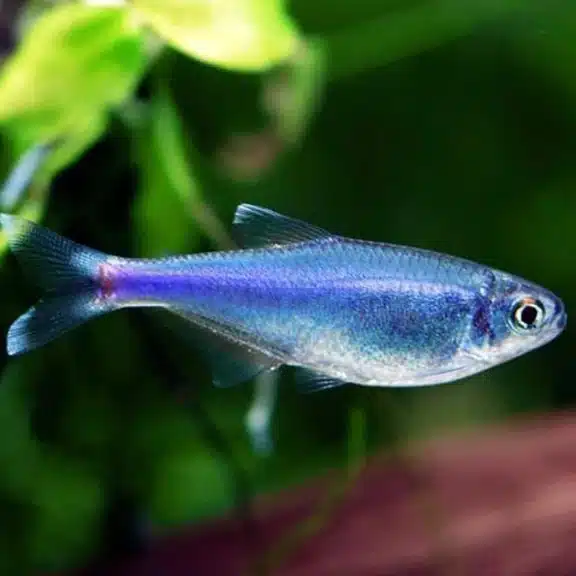
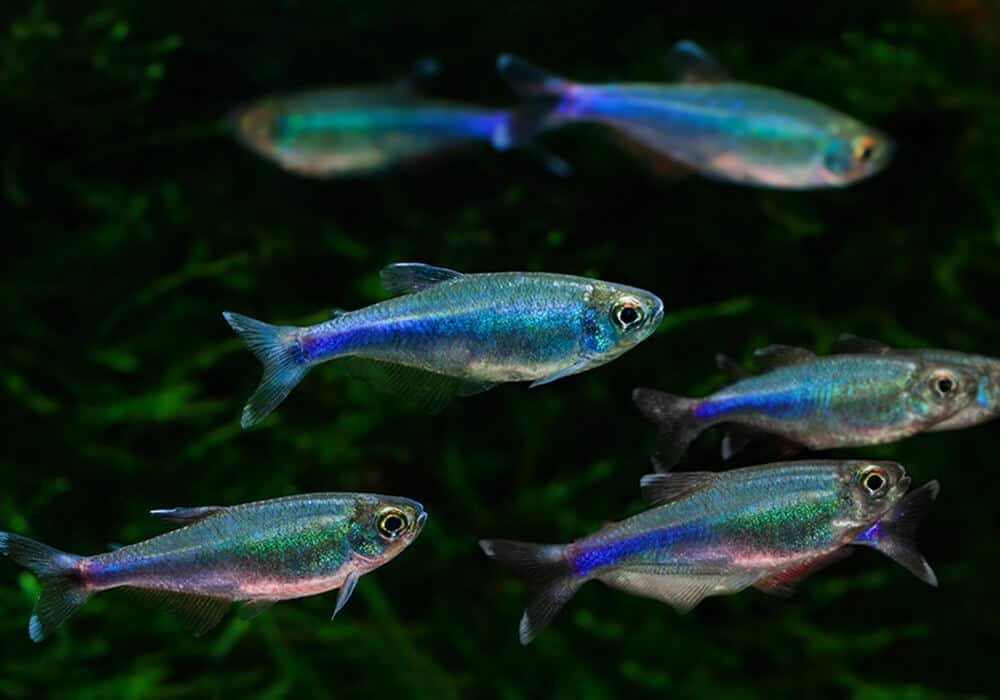
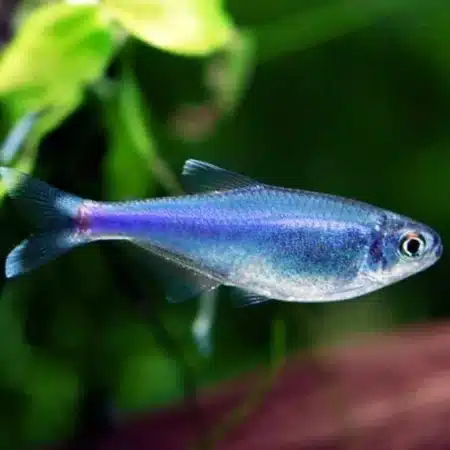
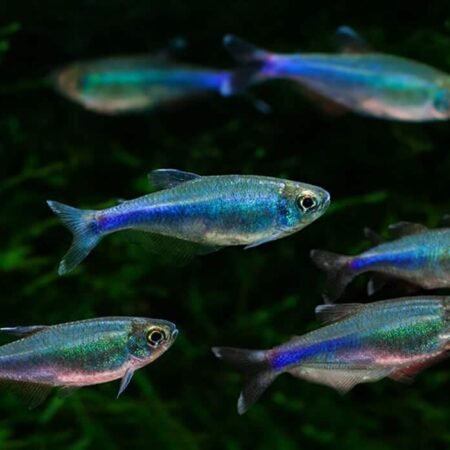
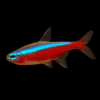
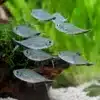








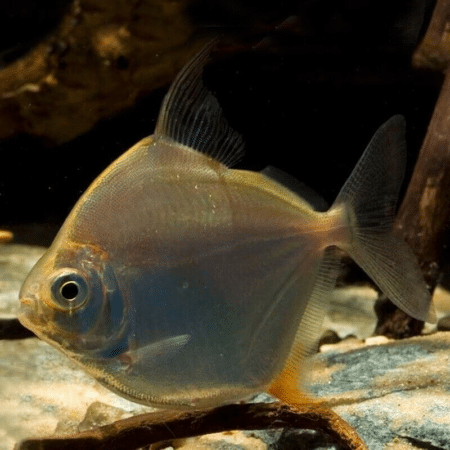

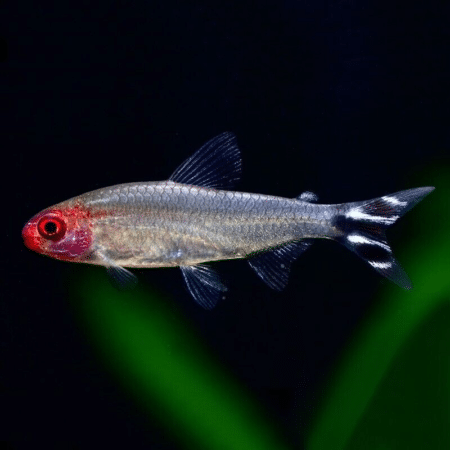

Emily Carter (verified owner) –
I’ve been an aquarium hobbyist for over five years, and I recently decided to add six Cochus Blue Tetras to my tank, and I’m absolutely thrilled with my choice! These stunning fish, which are often compared to neon tetras for their vibrant colors, have brought an amazing dynamic to my freshwater setup. They arrived within just a few days after ordering, all healthy and active, which is a testament to the seller’s care in shipping.
After about two weeks of observing their behavior, I can confidently say these little guys have a wonderful personality. They are playful, darting around the tank and creating a beautiful display alongside my other tropical fish. I love how they school together, which is a joy to watch!
One minor concern I had was their initial shyness; they hid a bit at first, but they quickly adapted once they felt secure in their new environment. Providing plenty of plants and hiding spots really helped! I wholeheartedly recommend these fish for both beginners and experienced aquarists looking to add a splash of color and life to their tanks. They are truly a delightful addition, and I can’t wait to see them grow. Would definitely buy again!
Emily Carter (verified owner) –
I recently added 6 Cochus Blue Tetras to my aquarium, and I couldn’t be happier! These little beauties enhance the beauty of my tank with their stunning blue and yellow colors. After just a week of acclimation, they settled in beautifully and are swimming around confidently. I’ve kept several species of peaceful South American tetras in the past, but the Cochus really stand out with their vibrant hues and friendly demeanor. They’ve quickly become a favorite among my other freshwater fish. One minor concern was their initial shyness, but that faded in no time as they found their place in the community. Their peaceful nature makes them an ideal choice for anyone looking to create a harmonious atmosphere in a community tank. I highly recommend these tetras to beginner and experienced aquarists alike. Just ensure you provide ample space and hiding spots, as they thrive in a well-decorated environment. Overall, I’m thrilled with this purchase and would definitely buy them again!